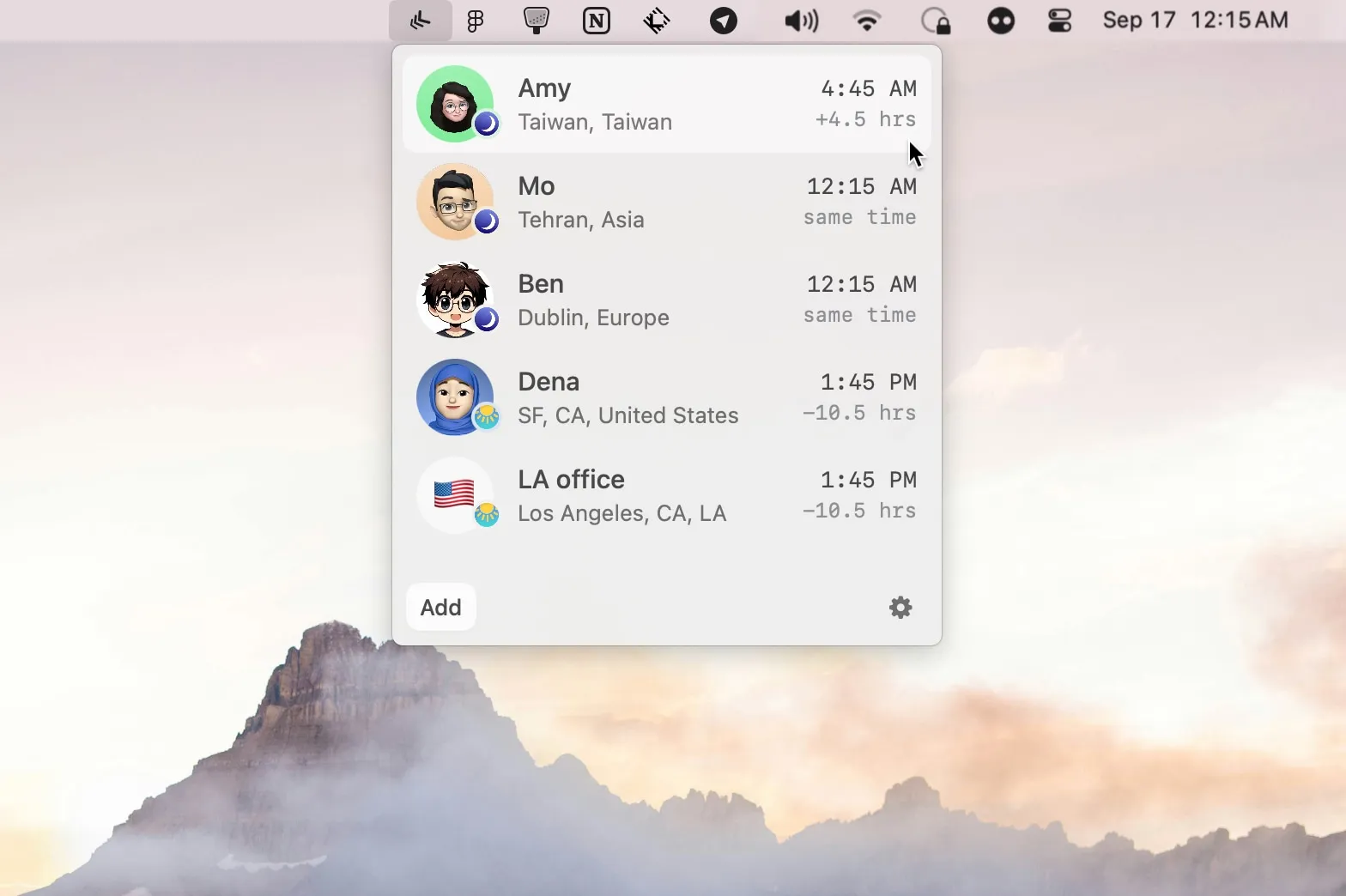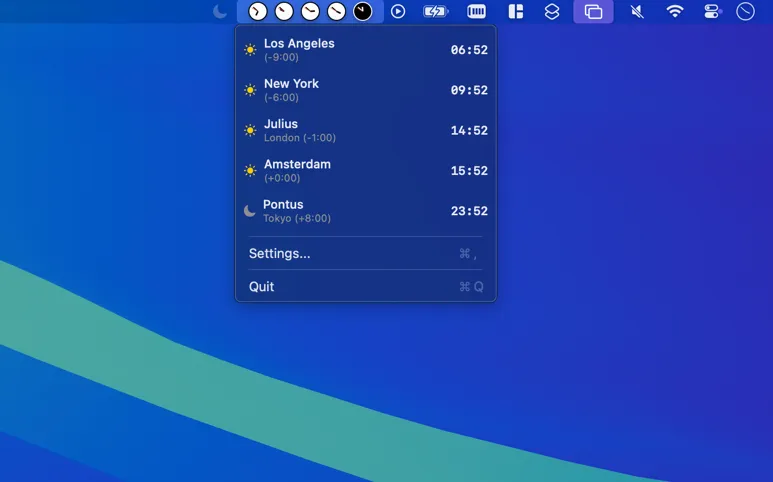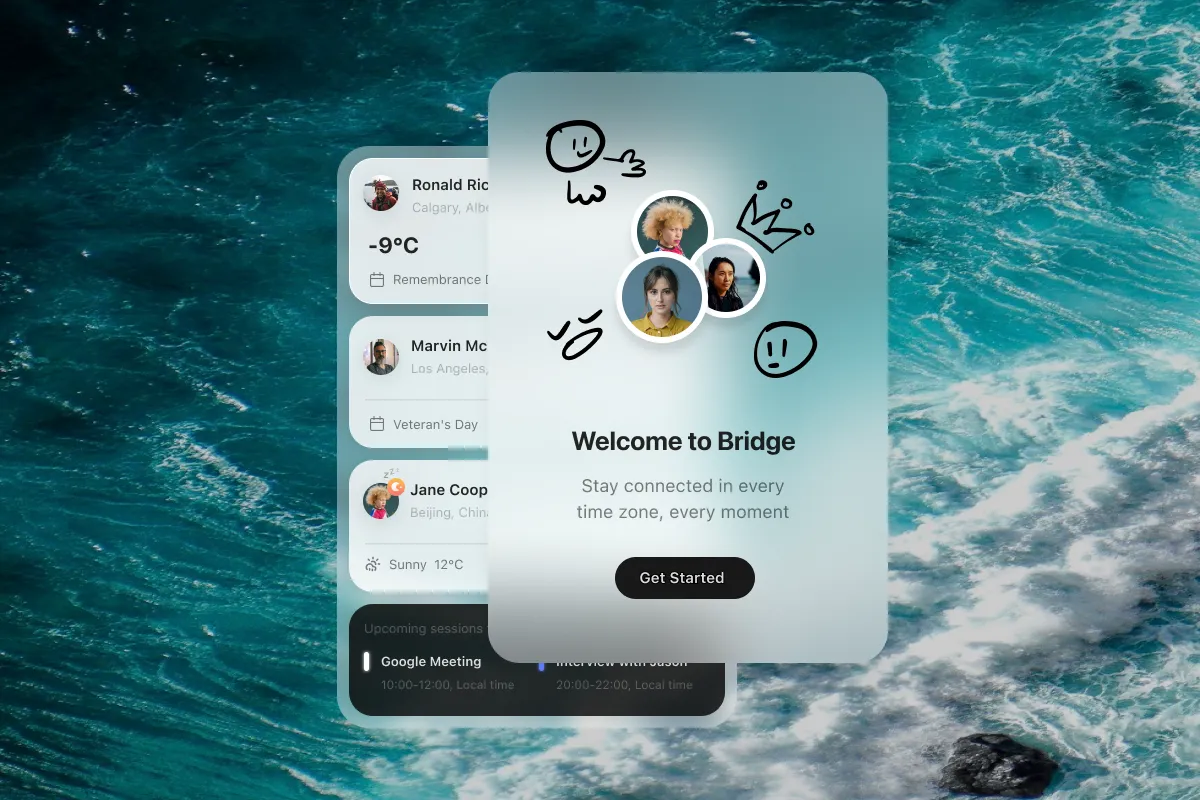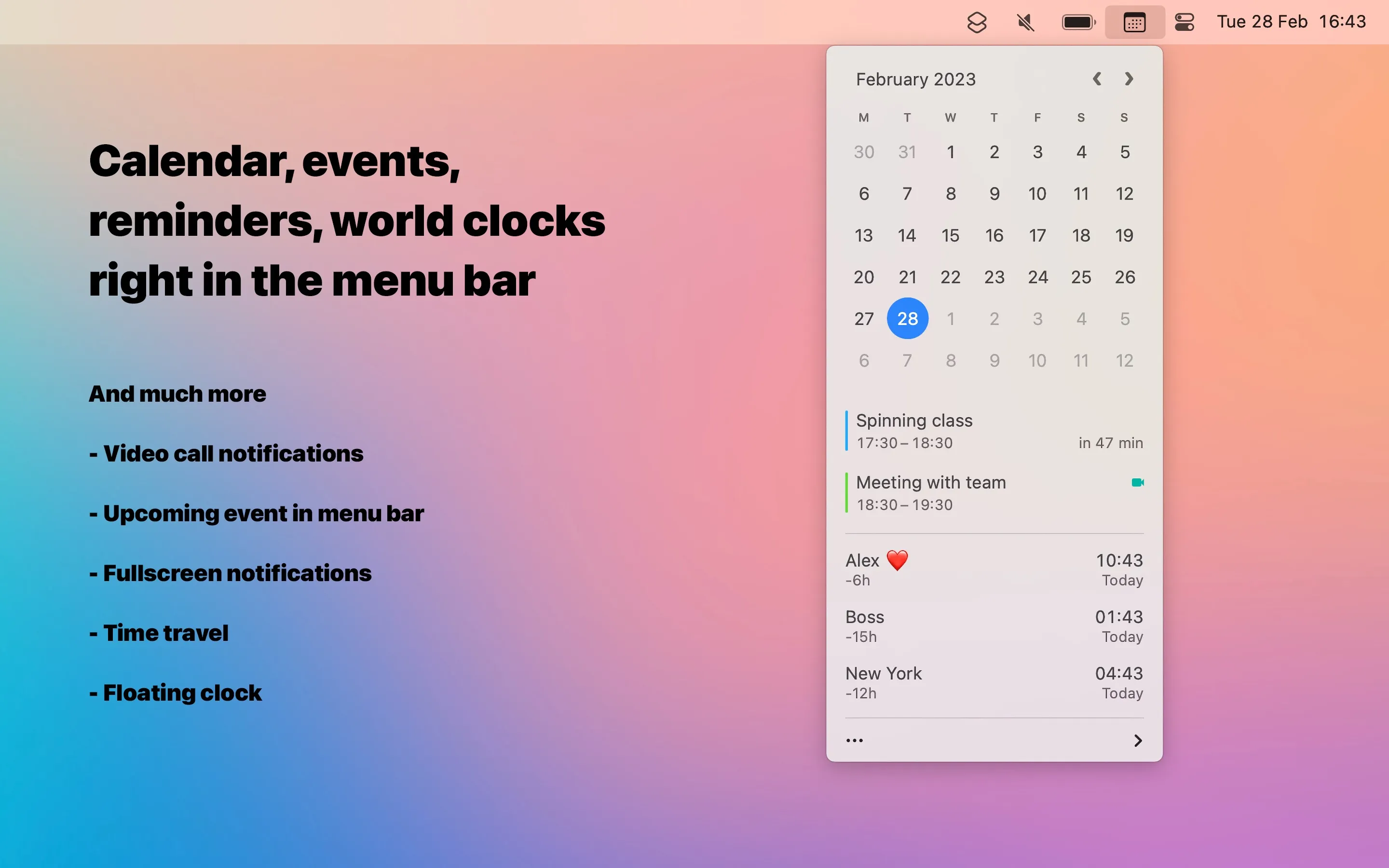I’ve spent the last four years coordinating with remote teammates across three continents from my home office in Sydney, and I’ll be honest - the mental math never gets easier. Just this morning I scheduled a call with my colleague in Beijing for what I thought was 2 PM their time, only to realize I’d confused CST with GMT and called them at 11 PM on a Friday night. Again.
After one too many scheduling disasters, I decided to systematically test every time zone app I could find on the Mac App Store. What I discovered was a surprisingly diverse ecosystem of approaches to the same fundamental problem: how do you stay aware of what time it is for the people in your life without constantly doing timezone calculations in your head?
These five apps represent the best solutions I’ve found, each with distinct philosophies about how time zone tracking should work.
A People-First Approach to Time Zones

There (Free) changed how I think about time zones completely. Instead of tracking cities or UTC offsets, There focuses on people. You add individuals with photos pulled from their social media handles, which transforms the usual sterile timezone displays into something that actually connects to real relationships.
I’ve been using There for six months now with profiles for my team members in Shanghai, Beijing, and London. The setup process is remarkably simple - you add people by name, select their location, and There can automatically pull profile photos from X or Telegram handles. When you need to check someone’s local time, you’re not thinking “what time is it in UTC+8” - you’re thinking “what time is it where Wei is” or “is Emma still in her workday?”
What sold me on There was the privacy approach - no sign-up, no cloud syncing, everything stays local. In an era where every app wants to harvest your data, this feels refreshing and proves you don’t need bloated software to solve real problems.
I’ve been running There for six months on my M2 MacBook Air without any system impact. The interface gets cluttered beyond 10-12 people, so it’s not going to work for everyone. But for small remote teams, it’s the right size.
Visual Elegance with Day/Night Awareness

ClockZones takes a different approach - pure visual design. After using it for three weeks, I appreciate how it handles the display problem. You get up to 8 time zones in your menu bar with day/night indicators that show immediately whether colleagues are awake or asleep.
The day/night indicators use color coding that makes it obvious whether someone is in daylight or nighttime hours. The sunrise and sunset calculations help you understand what part of the day your contacts are experiencing. It’s more information than just knowing the time.
ClockZones puts the timezone information directly in your menu bar rather than hiding it behind dropdown menus. This means you get timezone awareness with just a glance up, no clicking required. Users with crowded menu bars might find this problematic, but the trade-off is worth it for instant access.
The 8-timezone limit won’t work for larger global teams, and there’s no meeting scheduler integration, so you’ll still need other tools for finding optimal meeting times. But if you want visual clarity over feature complexity, ClockZones does one thing well.
One-Time Purchase with Time Travel

MiniZones caught my attention because of its pricing model - a one-time purchase in an era of subscription everything. You get over 500 time zones with no recurring costs or account creation required. The time slider feature turned out to be more useful than I expected.
The standout feature is the time slider - drag it to see what time it will be in all your tracked locations at any future point. This makes finding the perfect meeting time across multiple regions incredibly intuitive. Instead of mentally calculating “if it’s 10 AM in Sydney, and the meeting is in 6 hours, what time will it be in London and Shanghai?” you simply drag the slider and see all zones update in real-time.
The personalization features let you assign custom names and emojis to each timezone entry. Instead of “UTC+8” I now see “Wei 🇨🇳 Shanghai” or “Emma 🇬🇧 London” which makes quick identification easier during scheduling sessions. It’s a small touch that makes the app feel more personal.
The app needs macOS 13.0 or newer and uses minimal system resources. With nearly 950 App Store ratings, MiniZones has found its audience among users who prefer buying software once rather than renting it monthly.
The interface gets crowded with more than 6-7 time zones, and there’s no calendar integration. Some users will want more advanced features. But if you prefer straightforward timezone tracking with honest pricing, MiniZones works well.
Context-Aware Relationship Building

Bridge ($2.99) comes from Boring Design, and their philosophy shows. Instead of just tracking time zones, Bridge focuses on building relationships with remote people. It’s timezone tracking that includes weather, holidays, and sunrise/sunset times for your contacts.
The contextual information helps you understand what your colleagues are experiencing. When someone mentions it’s a rough day, you can see they’re dealing with bad weather. When planning team activities, you know local holidays that might affect availability. It’s more information than most timezone apps provide.
I’ve been working with Bridge for two months with profiles for my team in China and the UK, and the holiday tracking feature has prevented several scheduling mistakes. The app ensures you’re aware of local celebrations like Chinese New Year or UK bank holidays that might affect availability, showing respect for cultural differences and work-life balance across our distributed team.
The sunrise and sunset indicators remind you about work-life boundaries. When it’s past sunset for a colleague, you might reconsider sending that “quick question” message. These details contribute to more considerate remote working relationships, though some users might find them unnecessary.
Like There, Bridge keeps everything local - no data collection. Family sharing works for up to six family members with one purchase. The recent version 1.0.1 update added sunrise/sunset badges and enhanced menu bar options. At $2.99, it’s reasonably priced for what you get.
Bridge works better with smaller, close-knit groups than large organizational charts. Users who want minimal displays might find the extra contextual information overwhelming. But if you want to maintain awareness about remote relationships, Bridge adds the human context that most timezone apps ignore.
Calendar Integration for Power Users

Dato ($16) from Sindre Sorhus takes the most comprehensive approach to menubar time management. Instead of just adding timezone information, Dato replaces your entire menu bar clock with a system that handles multiple time zones, meeting notifications, and calendar integration.
After a month with Dato on my M2 MacBook Air, the calendar integration works well. The app connects to macOS’s native calendar system, so events from Calendar, Exchange, Google Calendar, or any other service already configured appear instantly. No additional setup required - it uses whatever calendar setup you already have.
The meeting notification feature displays fullscreen notifications for upcoming video calls. It integrates with over 50 video call services including Zoom, Teams, Meet, and FaceTime. The notifications include direct links to join calls, which saves a few clicks when you’re rushing between meetings.
The “time travel” slider lets you explore different time zones interactively, which helps with scheduling across multiple regions. The customization options are extensive - you can configure how date and time appear in your menu bar, whether to show seconds, use 24-hour format, or display multiple time zones.
Despite the feature set, Dato remains lightweight with no detectable performance impact during normal use. The app requires macOS 15 Sequoia or newer and offers lifetime updates with the one-time purchase. At $16, it’s equivalent to two months of a Fantastical subscription, as Sorhus points out.
The extensive customization options can overwhelm users wanting basic calendar functionality, and the app requires time investment to configure properly. Some features like the time travel slider may be unnecessary for simpler workflows. But if you live in calendar applications and want comprehensive timezone management, Dato works well.
Finding Your Perfect Time Zone Solution
What strikes me about these apps is how differently they approach the same fundamental challenge. There focuses on humanizing time zone tracking through personal connections. ClockZones provides visual clarity without feature bloat. MiniZones offers comprehensive functionality with honest one-time pricing. Bridge builds relationship awareness through contextual information. Dato provides calendar integration for power users.
The choice depends on your coordination style and team size. For small, close-knit remote teams, There or Bridge create more personal connections. For visual processors who want instant awareness, ClockZones provides clarity without complexity. For comprehensive timezone management without subscriptions, MiniZones works well. For calendar power users who live in meetings, Dato integrates everything into one system.
After testing all five extensively, I find myself using different apps for different relationships - There for my core team in China and the UK, ClockZones for quick visual reference of the 8-11 hour time differences we navigate daily, and Dato for comprehensive calendar management across AEDT, CST, and GMT. Sometimes the best solution isn’t choosing one app, but understanding which tool serves each coordination need most effectively.
What I appreciate most about these apps is their commitment to user privacy and fair pricing. Four out of five are either free or one-time purchases, and three keep all data local on your device. In an era where every app wants to harvest your data and charge monthly fees, these developers are building tools that respect both your privacy and your wallet.
These apps also represent the best of independent software development - small teams creating focused solutions rather than feature-bloated platforms. Supporting developers like Boring Design, the There team, and others who prioritize user needs over venture capital returns feels increasingly important.
In an increasingly connected world, these apps remind us that global collaboration isn’t just about overcoming technical barriers - it’s about maintaining human awareness across time and distance while keeping control of our data.